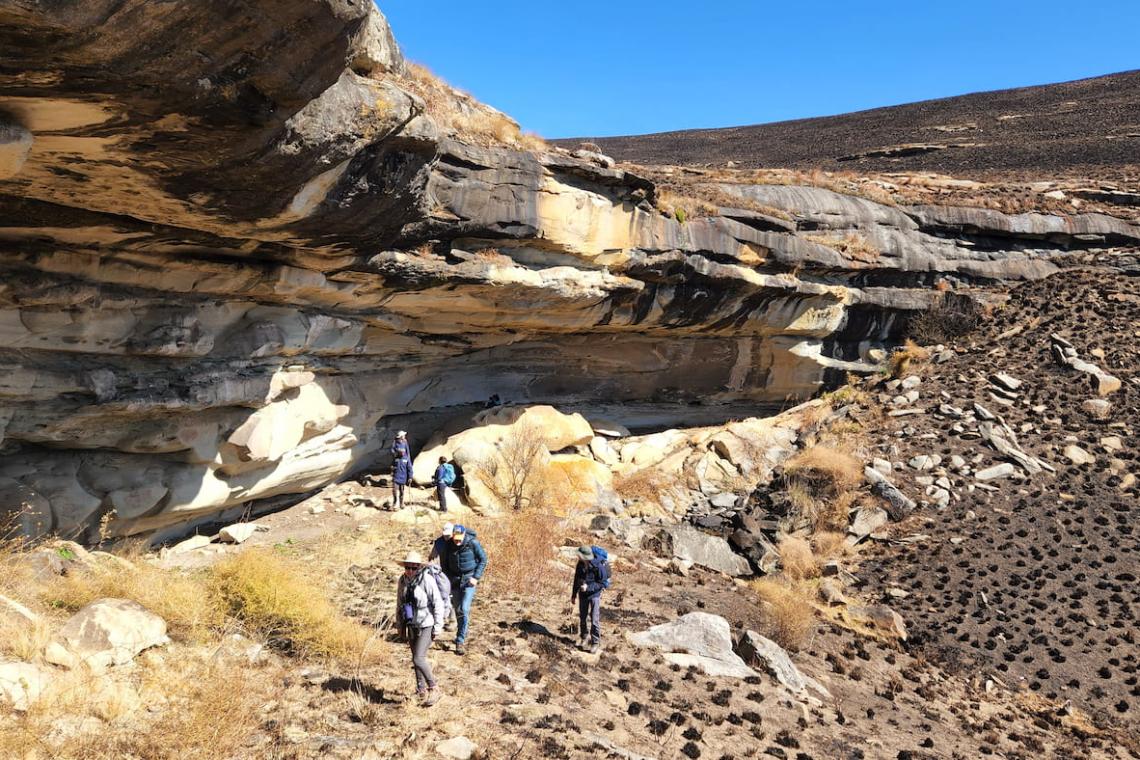There are many reasons to love South Africa and a few reasons to hate it. One of the best reasons to love it is its great wildernesses. Another is its colourful past filled with strong people.
One of the lesser-known wildernesses of South Africa is Nomansland. Yes, that was once the official name for a vast tract of unspoiled country between Kokstad and Underberg, Kwazulu-Natal, where there is now a new, four-day luxury slackpacking hike.
Key Considerations
The Griqua Nomansland Slackpack is a 4-Night, 3-Hike Day trail
You don't have to be an experienced hiker but fairly fit. You walk at your own pace. Hike not for people with walking difficulty and is not Wheelchair-friendly.
On day 1 you must carry your clothes and packed lunch for the following day. Otherwise, only a daypack with water and snacks
Distances on the three days of hiking are: 20km; 16km; 20km
Accommodation: Night 1: Flitwick Ranch, Night 2: Ntsikeni Lodge, Night 3: Experience 1880 lodge, Night 4: Flitwick Ranch
All meals are provided between supper on the first day and breakfast on the fourth day
Cost: R7260 pp sharing, R7788 for a single room. This includes all meals, accommodation and a guide. Visit Spekboom Website or contact Julia
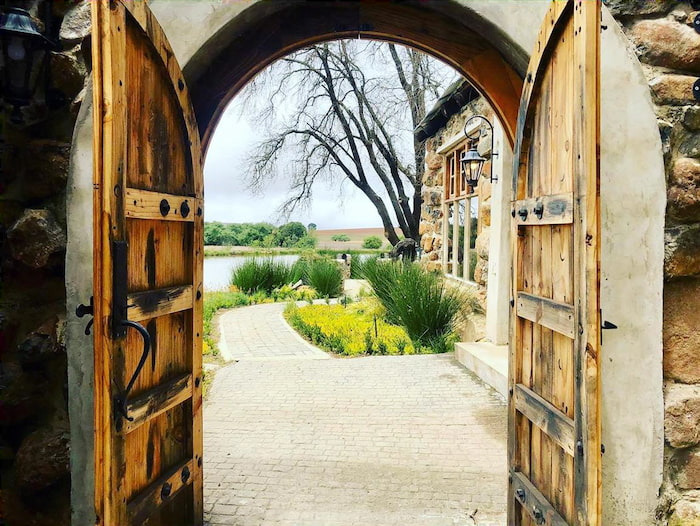
Nomansland was the border area between the inchoate Zulu and Xhosa nations in the early 1800s. Because it was a contested area nobody but a few Bushman clans lived there then.
Famously, Chaka raided the Mpondo in the last years of his reign. Although his warriors were successful, when a cold front passed over, because they wore only pieces of skin, many died of exposure. Chaka retreated back to warmer climes, leaving the area empty again.
Faku, king of the Mpondo, sent a message to the British governor in Cape Town asking him to populate the area as a defence against the Zulus. The governor referred the matter to the restive Peter Uys of Graaff-Reneit. But Uys, arriving in Nomansland during winter, concluded that the area was too cold for settlement.
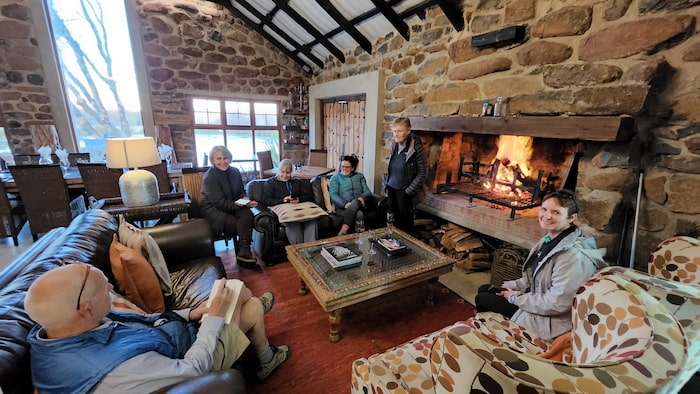
A Khoi traveller from the Cape, Pommer famously lingered in the area for a few months when his dog got sick. When his dog died, he called the area Droewig.
But Pommer relayed the information about the area to Adam Kok III, the governor’s chef at The Castle in Cape Town.
Adam Kok III was to lead the mixed-race Basters, later to be renamed Griquas, in their settlement near Kimberley, which became known as Griqualand West.
The Griquas thrived in that area. But when inevitably the British wanted to tax them, Kok remembered Nomansland and organized a great trek of his people (and over 200 000 sheep and 200 000 cattle) to what would eventually become Griqualand East.
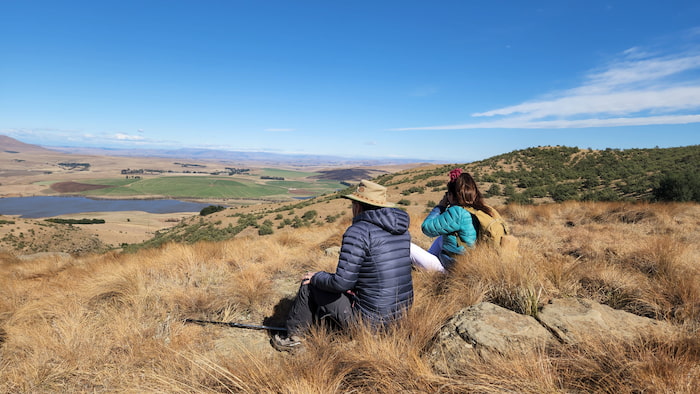
This history of the area is told to our group of 10 slackpackers by a more recent a strong person from the area, Kati du Plessis, owner of Flitwick Ranch, a sprawling beef and tourism venture close to the hamlet of Swartberg. The farm originally belonged to Donald Strachan in the late 1800’s, a good friend of Adam Kok III.
Other Flitwick staff members tell us about Kati’s strong Christian faith and her ceaseless activity and creativity - which includes creating a self-sustainable off-the-grid environment that leaves minimal carbon footprint. The Ranch produces their own organic veggies, free-range chickens, milk and beef. The beautiful fishing dams built around the guesthouse attract many birds.
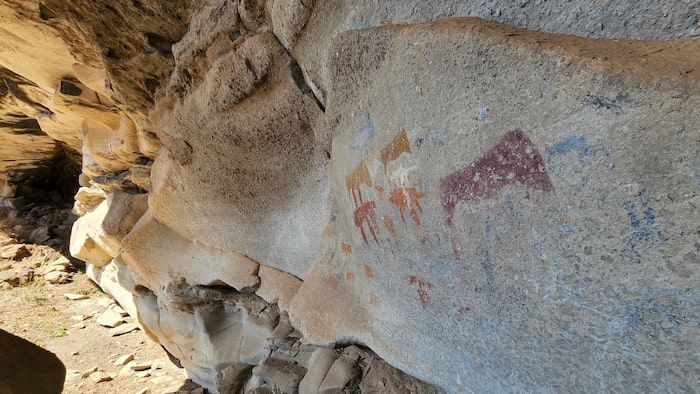
The extended family at Flitwick has now joined Julia Invernizzi of Spekboom Tours. Julia, also a force of nature, has designed and operated many hiking and cycling trails.
After arrival on the first day, we are dazzled not just by the stunning position of the ranch in these remote grassy mountains but also by the energy of Kati and her dedicated staff.
Our rooms are exquisitely furnished with antiques which remind us of the colourful history of the area. Log fires keep away the chill rolling in from the Drakensberg.
The restaurant on the farm, called The Deli, serves five-star cuisine using mainly homegrown ingredients.

The following morning our group walks through the Flitwick settlement, then via a forest onto higher ground. Now we have panoramic views of the rolling, almost treeless uplands stretching to the giant ring of the Drakensberg in the south and to the Kwazulu-Natal Midlands in the north. We pause to view the snow on the Drakensberg, about 50km away.
Our guide Lucas, who migrated from Pretoria with his family to live and work on the ranch. He knew Kati’s son from schooldays and leaving the bustle of the city to re-establish his farming roots has been a dream of his.
We walk on, breathing more deeply and freely in this “big sky” country. It is winter and the grass is tawny; within a few months the area will be green.
We wind along ridges and up valleys until we reach the high ground overlooking our destination for our second night: Ntsikeni Nature Reserve lodge.

Ntsikeni! The name recalls the sound of wind in the reeds of this huge, high wetland. This 9,200ha reserve is a remote and highly specialized niche for critically endangered birds like the Wattled Crane, White-winged Flufftail and Eurasian Bittern. The mountains around the wetland rise to over 2,200m; the 1,100ha wetland basin below serves as a water factory providing purified drinking water for the spawling farms and cities downstream.
The grass- and reed-filled streams of the wetland turn out to be alive with movement and the calls of common quails, cisticolas, flufftails and even perhaps rare bitterns, among many other birds. Over 120 species have been identified here. The reserve received the coveted Ramsar status for world-ranking wetlands in 2010.
We skirt the edge of the wetland to arrive at the thatched lodge which is the only accommodation in the reserve. Warmly welcoming us is a large contingent of women from the nearby community, who cook an array of food for us that night and the following morning. Ezemvelo owns the area, but the community operates the lodge. Many of these people from the local community are currently unemployed but have high aspirations to a livelihood for themselves through eco-tourism opportunities.
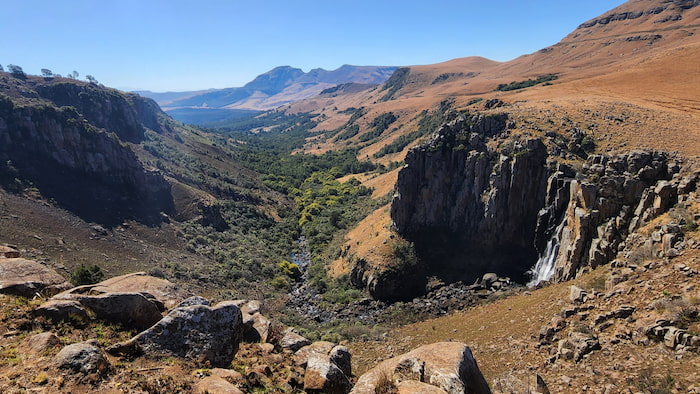
Some of the party settle into the lounge around the fireplace. Others walk out into the wetland for bird spotting.
The next morning, after a fulsome breakfast, we are off again. We walk along the edge of the wetland, spotting a rare Beared Vultures nesting site as we go. Besides birds, the reserve has large herds of wildebeest and other antelope.
By teatime, we reach the edge of the reserve and watch four sacred ibis flying in languid spirals, using the thermal currents above a majestic waterfall. A display just for us!
We walk on upwards and over the border of the park back onto a big beef farm owned by Kati’s brother. We skirt the mountains, along a farm road, then visit a cave with Bushman paintings. The paintings recall a culture now snuffed out which seems to have been in much better balance with nature than our own.

Then we head towards the Experience 1880 lodge - another project by Kati. She has lovingly restored a sprawling historic hotel at the foot of the Kilrush mountain.
The hotel was built in the late 1800s by an Australian, Bill Hayward, who was known for the production of illegal alcohol. Hayward apparently organised many raucous parties there; he also found various colourful ways of dodging the police.
The huge structure is under corrugated iron with a long verandah looking onto the hills.
Inside, the many rooms have been lovingly restored with antiques bought and installed, again, by Kati. The walls are of stone, which means the house is cold in winter, but every room has a fireplace. And most rooms have galvanised iron bathtubs.

Kati has even collected a wardrobe of period dresses for those who want to go back 150 years.
We are served a marvelous meal by Lucas’s wife, and then settle to discuss how it must have been in those days in the lamplight (there is no electricity here).
Next morning, after a too-much breakfast, we set out for the last day of walking. We follow another farm track leading through these endless hills, a 23km hike from the Experience 1880 lodge back home to our starting point, Flitwick Ranch. But at midmorning, we arrive at the Underberg-Kokstad tar road, where we rendezvous with a vehicle and are treated to a last drive back to Flitwick through the panorama.
Photos: Jonathan Invernizzi and Errol Dowes

